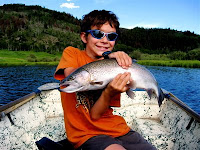
 CAULIFLOWER MUSHROOMS (Sparassis sp.) are deliciously nutty and they can be huge, with a firm texture that doesn’t soften with cooking like so many other species. Even after braising in a stew for an hour they remain al dente, which is a good way to describe the texture since this mushroom resembles nothing so much as a bowl full of cooked egg noodles.
CAULIFLOWER MUSHROOMS (Sparassis sp.) are deliciously nutty and they can be huge, with a firm texture that doesn’t soften with cooking like so many other species. Even after braising in a stew for an hour they remain al dente, which is a good way to describe the texture since this mushroom resembles nothing so much as a bowl full of cooked egg noodles.
Those wavy protrusions and deep clefts are expert at trapping duff and forest debris, making the cauliflower one of the more difficult mushrooms to clean. Worms like them too. The trick, as with so many tasty mushrooms, is to find them before the insects do—or else cut away the infestations as best as possible.
Sichuan peppercorns are the key ingredient. Not really pepper, the spice is actually the husk of a type of berry widespread through Asia. When consumed, it gives the mouth and lips a numb tingling feeling that works well with other hot spices commonly found in Sichuan foods.
1 lb cauliflower mushroom, boiled for a few minutes and cut into pieces
1 lb Napa cabbage, pulled apart and cut into 2-inch squares
1/2 lb diakon radish, sliced into 1/4-inch thick half-moons or matchsticks
2 carrots, sliced on an angle into 1/4-inch thick ovals
6-8 hot peppers cut in half and de-seeded
1/4 cup sliced ginger
2 tbsp Szechuan peppercorns
2 tbsp vodka
6-8 cups water, boiled and cooled
3 tbsp salt
Mix the brine and Szechuan peppercorns in a large tupperware or other non-reactive container. Stir in vodka; this is strictly for sanitary reasons. Add vegetables, fungi, and spices, making sure they are immersed completely in the brine. Cover and store at room temperature for 3-5 days. After the initial pickling, the contents can be refrigerated for 2 weeks.



























 3
3

